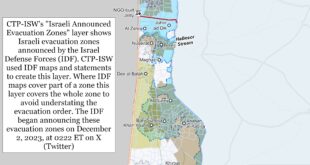
Active hostilities on the territory and in the air over Nagorno-Karabakh continue to be the hottest spot on the planet at the moment, shifting the focus from the recently smoldering foci of destruction in Syria and Libya. Bulgarian Military learned, through a widespread statement from the Azerbaijani Ministry of Defense, that their Russian-made S-300 anti-aircraft missile systems had decided to shoot down two Armenian Su-25 attack aircraft.
The total number of shot down Armenian Su-25 planes is already four in exactly one month since the announcement of the first shot down Armenian plane. The press release from Baku confirms the downing of the two fighters, saying that on October 29 at around 13:18 and 13:20 local time, the air defense systems of Azerbaijan were activated when the two attack planes tried to carry out massive bombardments of Azerbaijani positions. army along the Nagorno-Karabakh conflict.
According to field sources, the use of the S-300 anti-aircraft missile system by the Azerbaijani forces occurs for the first time during the conflict, especially with regard to their use directly against attack aircraft.
Military experts comment that the first use of the Azerbaijani S-300s and their successful use in the last 24 hours could start their deployment in the conflict areas and this will actually become a great danger for the Armenian planes, which are gradually declining. The Su-24, which is in service in both countries, does not have the technical and functional capability to deal with such systems, making them an “open target” for missiles.
We remind you that very recently the Armenian Ministry of Defense announced that it is starting to use its latest Su-30SM fighters, which are supposed to be the “strike” force against the Azerbaijani S-300 air defense systems, as they have PESA radars and missiles with precise targeting and destruction. Armenia has four such aircraft.
The situation in Nagorno-Karabakh escalated on September 27, active clashes are taking place in the disputed territory. Martial law was introduced in Azerbaijan and Armenia, and mobilization was announced. Both sides reported killed and wounded, including civilians. In Baku, they announced the control of several Karabakh villages and strategic heights. Yerevan also reports about the shelling of the territory of Armenia.
Anti-aircraft missile system Osa shot down an Azerbaijani multi-role aircraft
Two days ago a video was spread on social networks and by some media about how an Azerbaijani single-engine multi-purpose An-2 plane was shot down from a missile launched by Russian-made Osa anti-aircraft missile system. This missile system is in service among both the Armenian military and the Azerbaijani military.
Confirmation of the identity of the aircraft [that it belongs to the Azerbaijani forces – ed.] Comes from the Armenian side, who also claim that this aircraft was in unmanned mode and carried out intelligence on the location and distribution of enemy troops, as well as the location of the enemy’s air defenses. Almost half a month ago, it became clear that Azerbaijan has managed to modify and update the functionality of the aircraft to unmanned control.
According to various sources, whose information is still contradictory, in the last few weeks Azerbaijan has lost dozens of such planes, which were also shot down through the use of anti-aircraft missile systems. Some satellite photos show a steady decline in the number of such aircraft among Azerbaijani airports, which may confirm to some extent that they are the most frequently shot down aircraft by Artsakh’s army and the air defense systems used.
Nagorno-Karabakh conflict
Azerbaijan and Armenia have been in conflict over Nagorno-Karabakh since February 1988, when the Nagorno-Karabakh Autonomous Region announced its withdrawal from the Azerbaijan SSR.
During the armed conflict in 1992-1994, the Azerbaijani side lost control of Nagorno-Karabakh and the seven areas adjacent to it. Since 1992, negotiations have been conducted within the framework of the OSCE Minsk Group on a peaceful settlement of the conflict. The group is led by co-chairs – Russia, USA and France.
In 1994, Azerbaijan, Armenia and the unrecognized Nagorno-Karabakh Republic, through the mediation of Russia, signed the Bishkek Armistice Protocol. At the same time, military operations did not stop there, which periodically renewed. The most significant exacerbation of the conflict was the four-day war of 2016. Then hundreds of soldiers on both sides became victims.
Russian Foreign Minister Sergei Lavrov, during a meeting with the President of Azerbaijan last year, called for a rhetoric that would go against the fundamental principles endorsed by both sides and enshrined in the UN Charter and the Helsinki Final Act when resolving the situation around Nagorno-Karabakh. At the same time, the head of the Russian Foreign Ministry admitted that much more needs to be done to achieve a long-term political settlement.
 Eurasia Press & News
Eurasia Press & News



